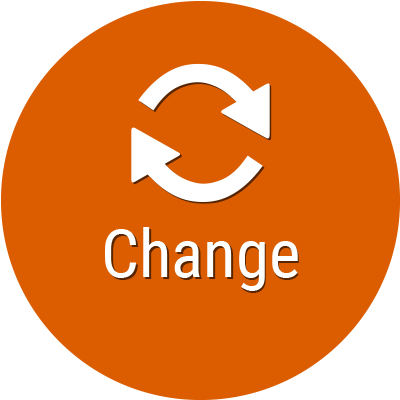6 Steps to Applying the BACCM™
Receive free IIBA updates and exclusive content!
According to the BABOK® Guide, The Business Analysis Core Concept Model™ (BACCM™) is a conceptual framework for business analysis. A conceptual framework is visual representation of expected relationships between variables within a system.

Study and analysis of business analysis initiatives across various perspectives, industries and methodologies revealed six key elements that are common in most business analysis work. The BACCM™ shows relationship between these key variables (core concepts).
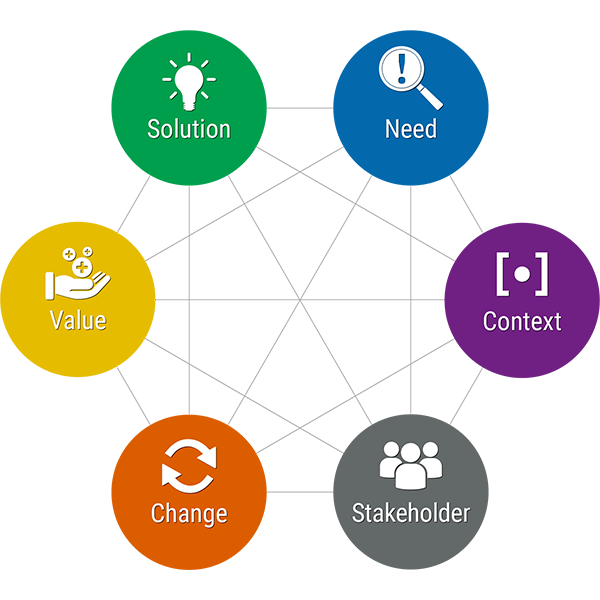
Source: IIBA KnowledgeHub
These concepts are:
- Stakeholder
- Need
- Change
- Solution
- Value
- Context
They are ideas that are fundamental to the practice of business analysis, and they are all equal and necessary, none holds greater importance than the others.
The BACCM Canvas
This is a one-page model that captures each component of the business analysis core concept model for any given initiative. It is useful for establishing the foundation of the work to be done and charting a path for delivery to achieve business outcomes.
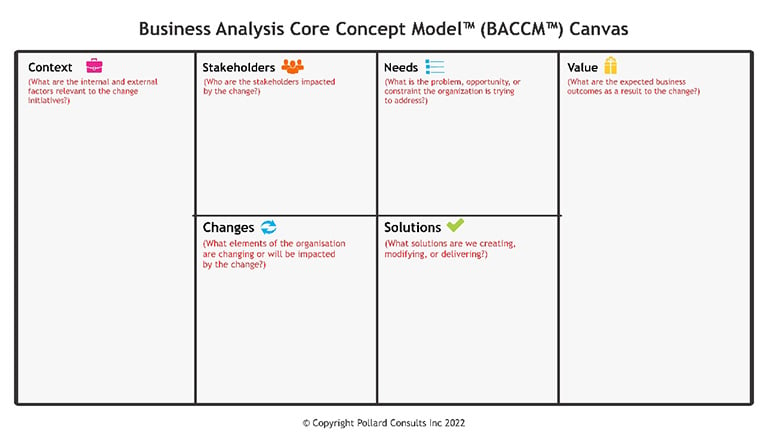
It’s a great communication tool that depicts what an initiative is all about at-a-glance, clearly highlighting the business needs, expected changes and business outcomes.
Let us consider each of the components in more detail:
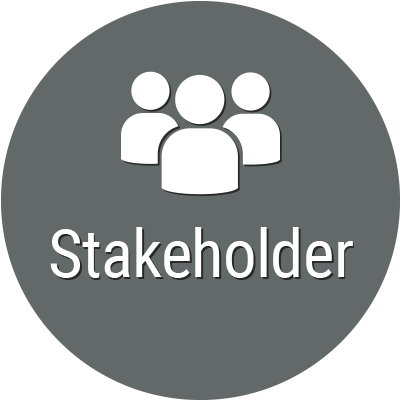 |
Stakeholders: These are groups of individuals impacted by the change, they are often categorized based on their interest in, impact on, or influence over the change. |
 |
Need: This is the problem, opportunity, or constraint.Some facts about needs:
|
|
|
Change: These are acts of transformation performed in response to a Need.They are actions targeted to resolve problems or take advantage of an opportunity. The goal is usually to arrive at a solution that may increase value while minimizing risk or loss to the organization. Changes are deliberately applied and controlled through the application of business analysis principles and practices. |
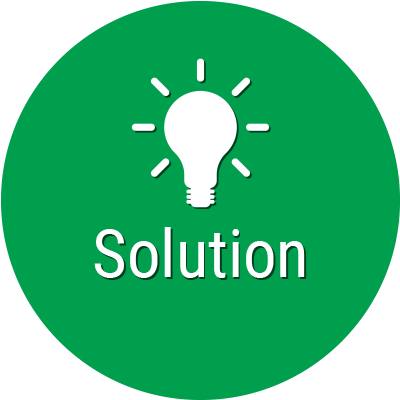 |
Solution: As the name implies it is the answer to the needs of the organization.A solution satisfies the needs of stakeholders by eliminating or minimizing the problem and taking advantage of the opportunity. Solutions can be tangible or intangible and would typically create or deliver value to the stakeholder.
|
 |
Value: is the importance or worth of something to a stakeholder within a given context.Value can also be defined as the net result of realized benefits, gains, returns resulting from satisfying the need. It can be tangible or intangible. Changes can result in an increase or decrease in value. Decreases in value can be in the form of losses, risks, and costs. |
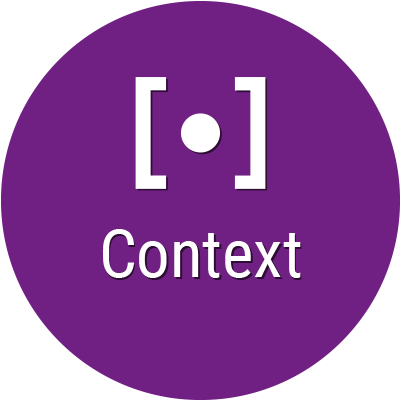 |
Context: This is the internal or external environmental element relevant to the change.These elements influence, are influenced by and provide understanding of change. They can be demographics, goals, governments, infrastructure, languages, processes, products, projects, attitudes, behaviors, beliefs, competitors, or culture. Every change occurs within a context, the context helps define what is in and out of scope for the change. |
Application of BACCM Canvas
- One page summary of business project/initiative
- Great communication tool for non-business and external stakeholders
- Useful for planning and preparing for elicitation
- Quick onboarding tool for new project stakeholders
- Great input/starting point for Organization Change Management (OCM) strategy
- Reference point and guardrails for all team members as they continue to design and build the solution through multiple iterations
- A living document that is updated as the project progresses to reflect the current realities of the initiative
Steps to Developing a BACCM CANVAS

Step 1
- Identify relevant stakeholders that are impacted by, interested in or can influence the change.
Step 2
- Plan and prepare for elicitation with relevant stakeholders
- Application of appropriate elicitation technique such as document analysis, interview, workshop, observation, surveys can be used to gather information for the BACCM canvas.
Here are sample questions that can be asked during elicitation:
- What need is the business trying to satisfy?
- Are identified needs real needs or expressed desires?
- What changes are we performing?
- What elements of the organization are changing or will be impacted by the change? (Change impact assessment)
- Who are the stakeholders impacted by the change?
- What is the stakeholder’s definition of value?
- What are the expected business outcomes as a result of the change?
- What solutions are we creating, modifying, or delivering?
- What is the organization’s context?
- Are there other regulatory and external elements relevant to the change
Step 3
- Conduct elicitation.
Step 4
- Analyze, and summarize elicitation results.
Step 5
- Validate the business analysis information.
Step 6
- Plugged validate business analysis information into the canvas.
- It is recommended to use phrases and short sentences, avoiding the use of wordy sentences.
Step 7
- Socialize canvas with relevant stakeholders and review periodically to update for any new information that may have come up.
The BACCM canvas is a living document that should be updated as the project implementation progresses, and new relevant information becomes available.
I have used and applied this approach practically in my work. I encourage you to do the same, simplify your work by describing it in terms of the core concepts, especially when working on a complex initiative.
Watch the on-demand webinar What You Need to Know About BACCM ™ or learn more about The Business Analysis Core Concept Model™ (BACCM™) in IIBA’s KnowledgeHub.
Not an IIBA Member? Learn about membership and how to access IIBA’s KnowledgeHub here.
References:
- A Guide to the Business Analysis Body of Knowledge (BABOK® Guide) v3
- https://www.iiba.org/professional-development/knowledge-centre/ba-connection/baccm-overview---the-core-concepts-business-analysis-core-concept-model/
- https://www.knowledgehut.com/blog/business-management/the-business-analysis-core-concept-model-baccm
About The Author:

Oge is a business transformation enthusiast. She has served as project manager, business analyst, and organizational change manager on diverse transformation projects, across multiple industry domains for over 13 years.
She holds a First-Class honors degree and several other professional certifications; CBAP®, PMP®, PROSCI®, IIBA®-CPOA and she is currently the Director, Professional Development, IIBA Halifax Chapter. She also owns and manages Pollard Consults an IIBA® endorsed education provider, equipping professionals to start and grow their careers in Business Analysis.

